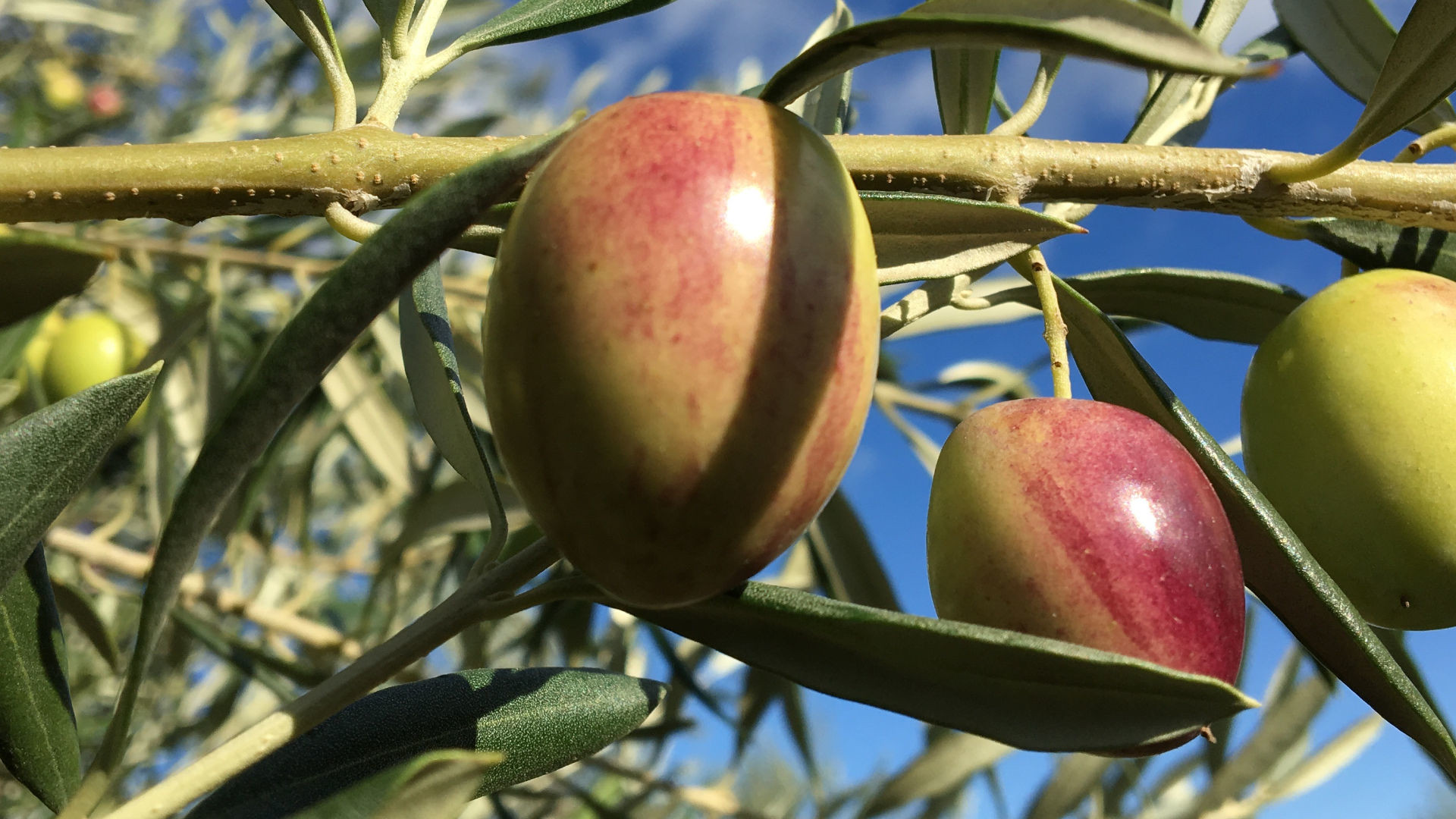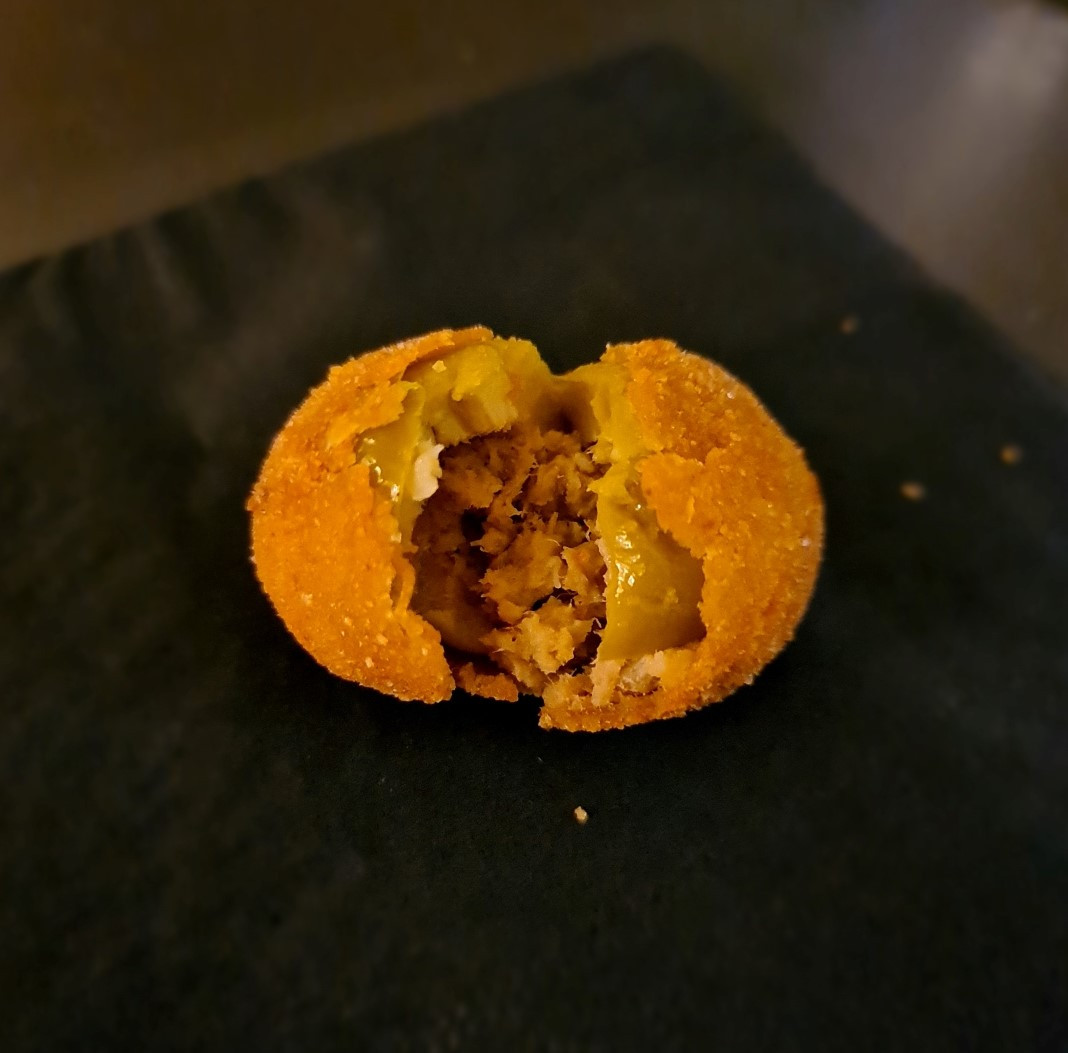If you had the chance, like me, to study in the Marche, lucky enough to have a housemate from Ascoli, then you would have had the opportunity to taste one of the most famous delicacies of that area: the
olive all’ascolana. Today’s culinary trip takes us to the region of Marche or, more precisely, to Ascoli Piceno. This city is home to a small, delectable gastronomic treasure whose simple yet expertly worked ingredients will conquer the hearts of eaters, young and old.
The variety of Ascolana OliveAscoli-style olives are a dish that received Protected Designation of Origin status in November 2005. The term should not be confused with the name of the cultivar itself, the
Ascolano olive – though it is the star of the show – as “Ascoli-style olives” refers to the whole recipe which is famous not only in all of Italy, but also globally. We’ve even found Ascoli-style olives in Tokyo!

What sets the soft
Ascolano olive apart from others of its kind is its rich pulp and a smaller-than-average pit, which is easy to separate from the rest of the fruit. These tender, medium-sized olives are particularly delicate cultivation-wise: they prefer steep, hilly terrain – of which Ascoli Piceno has plenty. The harvest of Piceno’s tender
Ascolana olives begins in September, when the fruit is still green, plump, round and perfect to go straight into brine.
In the region they call "table olives" those intended to be eaten, mostly stuffed and fried following the known recipe. The harvesting is carried out by hand throughout the whole month, without use of mechanical means; then, towards the end of September, the olive begins to ripen too much and what is left on the trees is used to produce oil.
The story behind the Ascolana Olive recipeHaving an
Ascolana housemate also means having an adopted
Ascolana grandmother. Thanks to this acquired relatives, our off-campus house full of female students was always overflowing with, you guessed it …
Ascolana olives. To prepare her olives,
Nonna Giulia turned to the traditional recipe that only the hands of a grandmother would know how to replicate. So, clearly, I had to give her a call before writing this blog post. And how could I turn her down when she actually invited us to Ascoli to make them together?
Let’s take a step back in time and start at the beginning to uncover the roots of this delicacy.
Ascolana olives were already documented as early as the 16th century when Pope Sixtus V remarked just how exquisite the precious fruit were in a thank you letter he wrote to the Elders of Ascoli.

It is said that the cooks of the noble families of Ascoli were the ones who invented the typical filling. It seems these spheres of ecstasy filled with meat its originated in the homes where there was leftover meat which was then minced and used as a stuffing to put inside the olives. This recipe had a long preparation time and, due to the use of meat, not everybody could afford it. Historians suggest that the recipe as we know it today crystallized around 1800.
We know for sure that, after he had tried some in Ascoli on January 25th, 1849, Garibaldi himself decided to grow a few olive trees in Caprera to replicate the recipe on his own!
For a long time, consumption of
olive ascolane (literally “olives from the city of Ascoli”) remained a privilege, only for richer families, and always in special occasions, such as Easter, Christmas and weddings.
Olive ascolane are now served as an appetizer, but in the past, they were considered a main dish or used as part of the locally popular
frittura mista, a mix of fried foods. The factory production of
olive ascolane began in 1875 when the local engineer Mariano Mazzocchi first started selling this regional delicacy produced in mass quantities. Today their price is affordable and they can be easily found everywhere in Italy: frozen and ready to fry up at home, as a snack or served with an aperitif, but… the best ones are still the ones made at home and especially those made and consumed in the province of Piceno.
Nonna Giulia showed us how slow and labor-intensive their preparation is. She told us that in past the meat filling would be inserted raw (today it is mostly cooked before-hand), and that the olives were fried in lard. To create the perfect olive, mastery, a lot a patience and a lot of love are required. The olives were rarely eaten, but maybe because the best things need to be savored in small portions?
Nonna Giulia’s advice: eating them with a good glass of white wine:
“it’s to die for!”.

